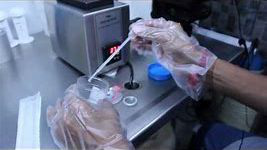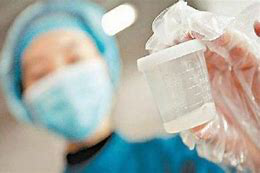(1) Semen volume: Normally greater than or equal to 2 ml. When it is more than 7 ml, not only the sperm density decreases, but also it is easy to flow out from the vagina, so that the total sperm count decreases, which is common in seminal vesiculitis; when it is less than 2 ml, the sperm volume is too little, but usually less than 1 ml. At this time, the contact area between semen and female genital tract is small, or infertility is caused by viscous sperm which is not conducive to entering the cervical orifice of the woman. It is common in severe paragonaditis, low testosterone level, ejaculatory duct obstruction, retrograde ejaculation and so on.
(2) Color: Normally gray or slightly yellow. Milky white or yellowish green indicates inflammation in the genital tract or accessory gonads; red, pink and microscopic red blood cells are hematogenous semen, common in the inflammation of the accessory gonads and posterior urethra, occasionally in tuberculosis or tumors.

(3) Acidity: The normal pH value of semen is 7.2-7.8. Less than 7.2 is found in ejaculatory duct obstruction or urine contamination; more than 7.8 is found in seminal vesicle inflammation or old specimens.
(4) Liquefaction time: After ejaculation of normal semen, it becomes gelatinous under the action of seminal vesicle coagulase and liquid under the action of prostatic liquefaction enzyme for 15-30 minutes, which is called semen liquefaction. After 30 minutes of ejaculation, if semen still does not liquefy, then it is considered abnormal.
(5) Viscosity: Contact the glass bar with liquefied semen and gently lift it to form a semen filament. Normally, the length of the it is less than 2 cm.
(6) Sperm count: Generally expressed as the number of sperm per milliliter of semen. Normal value is greater than or equal to 20million ml. Subfertility or infertility is due to the decrease of the chance of sperm entering uterine cavity and fallopian tube.

(7) Sperm morphology: Sperm with normal morphology is greater than or equal to 50%, or can cause infertility.
(8) Motility: Sperm moving forward in a straight line is in a rate of more than 50%.
(9) Survival rate: Usually refers to one hour after ejaculation, live sperm is greater than or equal to 50%. The common causes leading to the decrease of sperm motility and survival rate are paragonaditis, varicocele, ciliary sluggishness syndrome caused by chronic respiratory tract infection, and inappropriate storage of antisperm antibodies or specimens in semen.
(10) Leukocyte: Leukocyte in normal semen is less than 1 million ml. The increase of white blood cells indicates the presence of infection in the genital tract or accessory gonads.
Routine examination of semen is a very important item. The quality of male sperm has a very important influence on the quality of fertilized eggs, embryos and fetuses.

